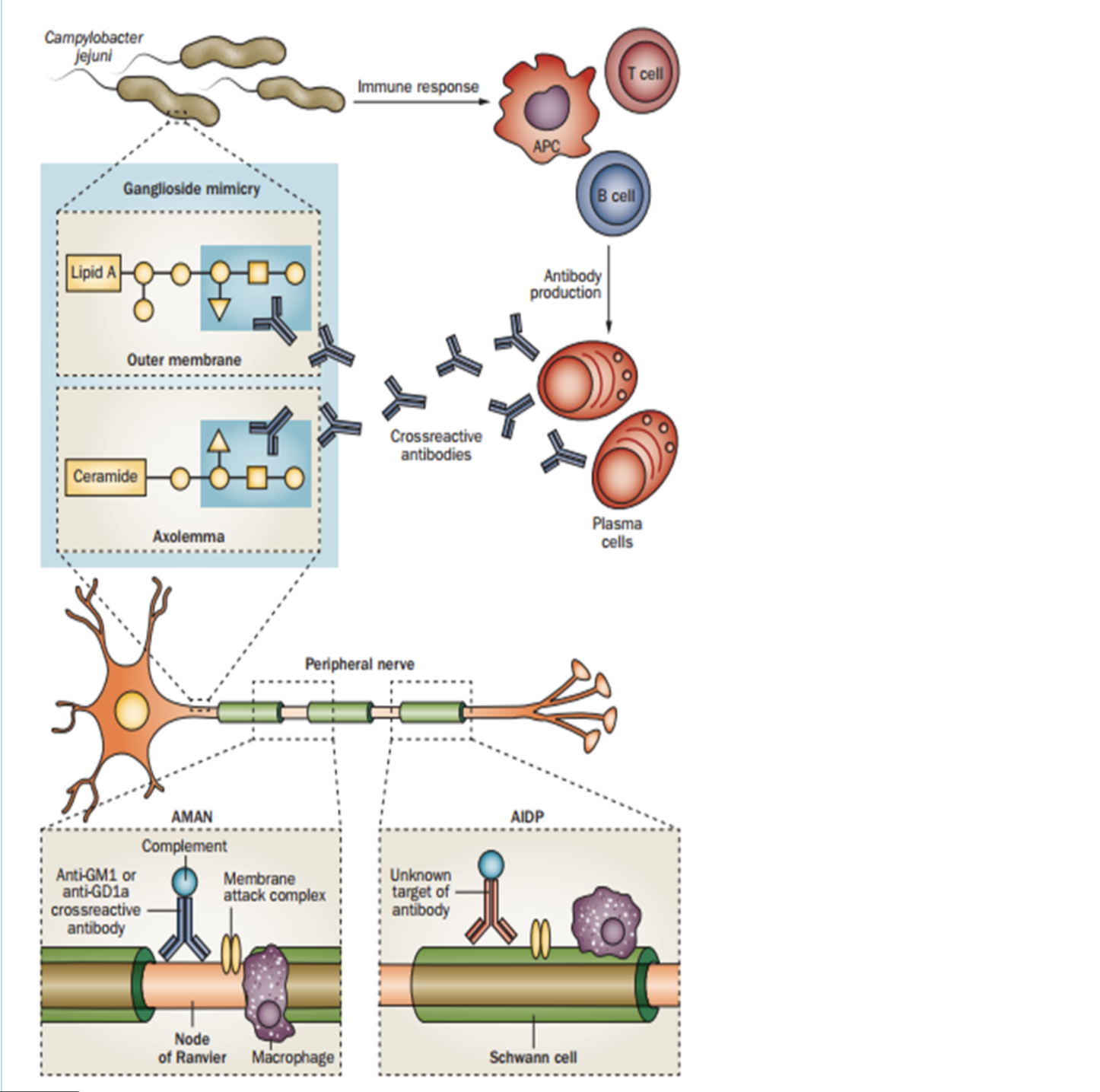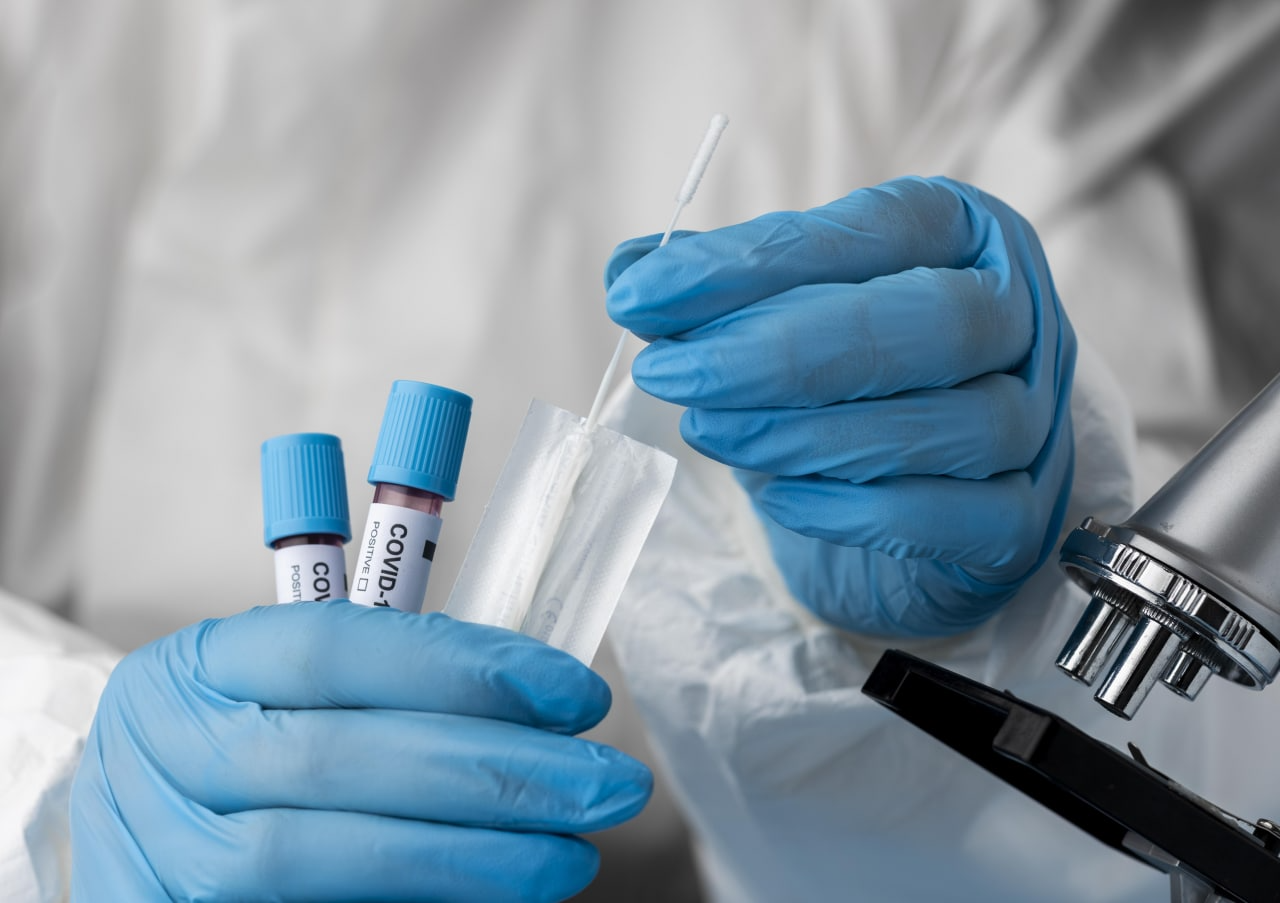Published by: Maria Bryndina on 07.July.2022
The introductory article about Guillain-Barre syndrome (GBS) can be seen here.
Prospective case-control studies remain the gold standard in establishing the epidemiological association of GBS with pathogens1. Such studies have established a cause-and-effect relationship between Zika virus and GBS. Thus, there has been a surge and subsequent decline in GBS cases since the 2014-2016 Zika virus outbreak in French Polynesia, Latin America and the Caribbean. During the epidemic, the morbidity temporarily increased by 2.6 times compared with the background incidence rates in these territories2. By the way, sensorimotor disorders, facial paralysis and respiratory failure are common for GBS, which developed after Zika virus. And demyelinating neuropathy usually develops after a cytomegalovirus infection or Epstein-Barr virus1. Taking all these into account and knowing the previous trigger disease, it is possible to predict the form of GBS and the prognosis of the disease with high probability.

Pathogenesis
Schwann cells and myelin are the main targets of immune attacks.
1. Antigen-specific T and B cells are activated, autoantibodies are synthesized, the complement system is activated, and the membrane attack complex (MAC) is formed.
2a. The antigens in AMAN cases are located at or near the node of Ranvier. Antibodies bind to the axolemma, resulting in complement activation with subsequent formation of MAC and sodium channels reduction.
3a. This damage leads to myelin destruction and the nerve impulse disruption.
4a. Then the macrophages enter the periaxonal space.
2b. The target antigens in AIDP are presumably located on the myelin sheath. Antibodies can activate complement, resulting in MAC formation on the outer surface of Schwann cells, initiation of vesicular degeneration, and sensitized macrophages invasion to the myelin sheath.
3b. As a result, edema and expansion of the endoneural interstitium, dissolution of the basement membrane, and deformation of lemmocytes occur.
GBS start is presented in Picture 1.

The Role of Genetics
Only one in 1000-5000 patients with Campylobacter enteritis will suffer GBS in the future3,4. This also proves the possibility of a genetic predisposition being involved in the development of GBS. Genetic factors have only been studied in small cohorts of patients so far. A relation between GBS and a specific tumor necrosis factor polymorphism has been found5. An association between polymorphisms in the MBL2 gene (coding for mannose-binding protein C) and the severity and outcome of GBS has also been confirmed6. The role of genetic susceptibility requires further study in large, well-designed, and adequately controlled cohorts.
Guillain-Barré Syndrome and Vaccination
Particular attention should be paid to GBS that occured after vaccination. Seasonal influenza vaccination often becomes a provoking agent. Perhaps, this is due to the fact that influenza vaccination is annual and relatively massive. But is the devil so black as he is painted? During the 1976 H1N1 influenza vaccination campaign in the United States, the estimated vaccine-related risk of GBS was approximately one in 100,000 vaccinated7. Later, several similar national and international studies were conducted. In particular, they confirmed, that the 2009 H1N1 influenza vaccine campaign was associated with a relatively low risk of GBS: 1 case per 1 million (!) vaccinated8. This is attributed to a technological leap in vaccines production and purification.
Vaccination may even reduce the risk of developing GBS, since the risk of developing GBS after a previous infection is higher than after vaccination. In particular, the risk of developing GBS after influenza is 4-7 times higher than after vaccination9. Relapses of the disease after vaccinations in patients with previous GBS have not been reported10,11. Despite rare post-vaccination GBS, such events cause significant public outcry and give a rise to anti-vaccination speculation. By manipulating the statistics, these people can trigger outbreaks of life-threatening diseases such as measles, for example.
In next articles the overview of treatment will be presented.
References:
- Nortina Shahrizaila et al. Guillain-Barré syndrome. Lancet 2021; 397: 1214–28
- Capasso A, et al. Incidence of Guillain-Barré Syndrome (GBS) in Latin America and the Caribbean before and during the 2015–2016 Zika virus epidemic: a systematic review and meta-analysis. PLoS Negl Trop Dis 2019; 13: e0007622.
- Tam, C. C. et al. Incidence of Guillain–Barré syndrome among patients with Campylobacter infection: a general practice research database study. J. Infect. Dis. 2006; 194: 95–97.
- Nachamkin, I., Allos, B. M. & Ho, T. Campylobacter species and Guillain–Barré syndrome. Clin. Microbiol. Rev. 1998; 11: 555–567.
- Wu L. Y., Zhou Y., Qin C. & Hu B. L. The effect of TNF-α, FcγR and CD1 polymorphisms on Guillain-Barré syndrome risk: evidences from a metaanalysis. J. Neuroimmunol. 2012; 243: 18–24.
- Geleijns K. et al. Mannose-binding lectin contributes to the severity of Guillain-Barré syndrome. J. Immunol. 2006; 177: 4211–4217.
- Schonberger L. B. et al. Guillain-Barré syndrome following vaccination in the National Influenza Immunization Program, United States, 1976--1977. Am. J. Epidemiol. 1979; 110: 105–123.
- Salmon D. A. et al. Association between Guillain-Barré syndrome and influenza A (H1N1) 2009 monovalent inactivated vaccines in the USA: a meta-analysis. Lancet. 2013; 381: 1461–1468.
- Kwong JC, et al. Risk of Guillain-Barré syndrome after seasonal influenza vaccination and influenza health-care encounters: a self-controlled study. Lancet Infect Dis 2013; 13: 769–76
- Poland G. A., Jacobsen S. J. Influenza vaccine, Guillain–Barré syndrome, and chasing zero. Vaccine. 2012; 30: 5801–5803.
- Kuitwaard K., et al. Recurrences, vaccinations and long-term symptoms in GBS and CIDP. J. Peripher. Nerv. Syst. 2009; 14: 310–315
Colleagues, haven't you joined our PharmaCourses of MENA region Telegram chats yet?
In the chats of more than 6,000 participants, you can always discuss breaking news and difficult situations in a pharmacy or clinic with your colleagues. Places in the chats are limited, hurry up to get there.
Telegram chat for pharmacists of MENA region: https://t.me/joinchat/V1F38sTkrGnz8qHe
Telegram chat fo physicians of MENA region: https://t.me/joinchat/v_RlWGJw7LBhNGY0







